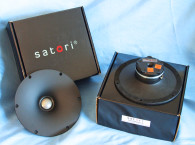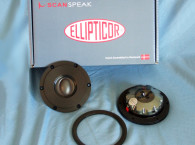
This month, Scan-Speak sent me its recently released D2908/714000, which is the company’s second 30-mm beryllium dome tweeter (see Photo 1). Scan-Speak’s first beryllium dome tweeter was the R3004 Air-Circ Illuminator tweeter, featured in Voice Coil’s January 2010 issue. Basically, the new D2098 utilizes the Revelator D29 dome’s wide surround concept, but with a 99% pure beryllium dome (sourced from Truextent) coupled to the highly effective and patented Symmetrical Drive (SD-2) neodymium motor system.
Scan-Speak’s SD-2 motor is composed of a shaped gap area in conjunction with a copper shorting ring (i.e., copper pole cap). Other features include a black anodized aluminum faceplate with a protective grill, [You don’t want your customer’s child jamming his fingers into a $590 (retail not OEM!) tweeter!], a titanium voice coil former, a non-resonant aluminum rear chamber, and gold-plated terminals.
I used the LinearX LMS analyzer to begin testing the D2908 beryllium dome by generating a stepped sine wave impedance plot. The result of the LMS 300-point impedance sine wave sweep is shown in Figure 1. The tweeter resonance is 525 Hz. Minimum impedance for this tweeter is 6.1 Ω at 4.8 kHz with a measured RE equal to 5.69 Ω. The factory specification for the motor Qts is 0.47.
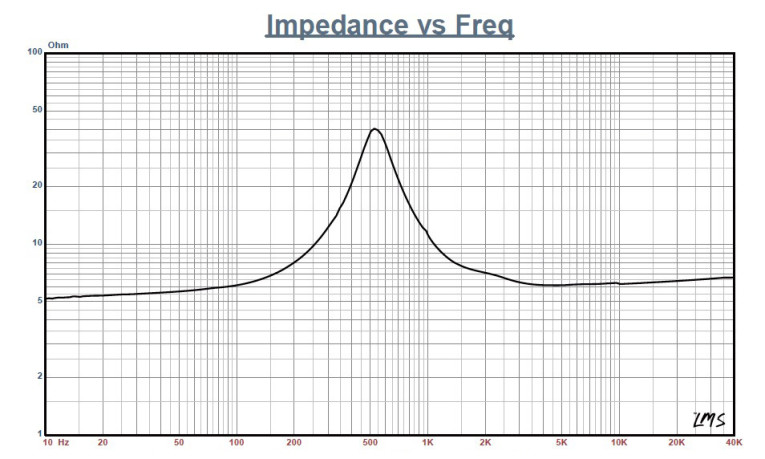
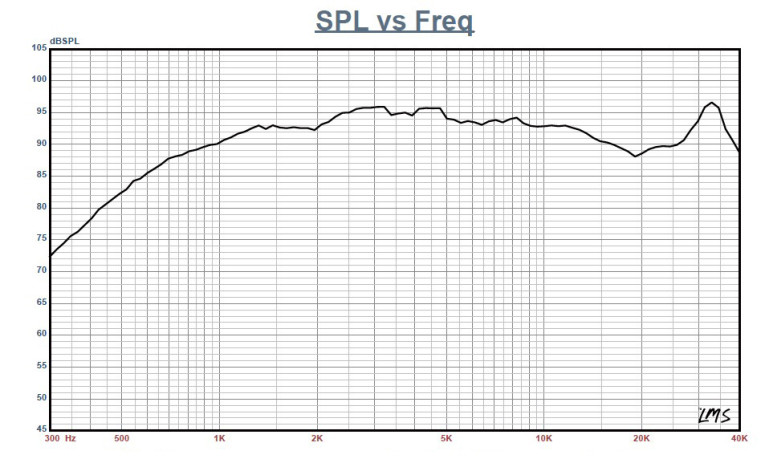
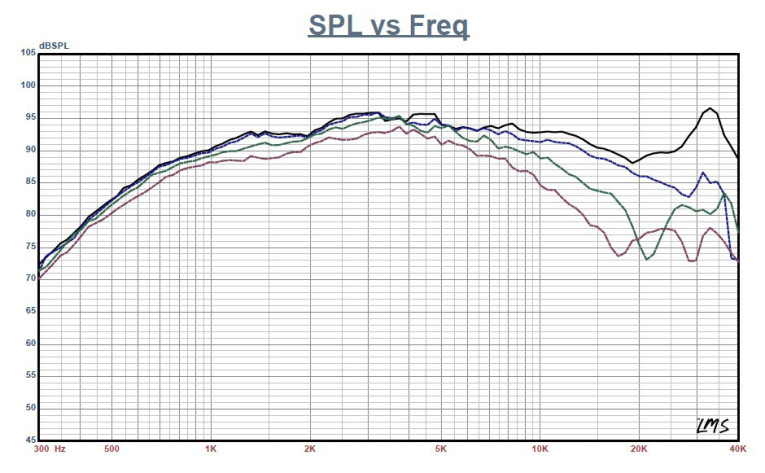

After completing the impedance measurements, I recess mounted the Scan-Speak tweeter in a small enclosure with a 7” × 12” baffle area and measured the on- and off-axis frequency response at 2.83 V/1 m. Figure 2 shows the on-axis response. The D2908’s frequency response is a very flat ±1.8 from 2 kHz to 12.8 kHz, with the beryllium breakup mode located at 32.8 kHz. Figure 3 shows the Scan-Speak Revelator beryllium dome tweeter’s on- and off-axis response. Off-axis, the device is –4.0 dB down at 10 kHz from the on-axis response with respect to the 30° off-axis curve and –8.2 dB at 45° off-axis, again with respect to the on-axis response. Figure 4 shows the normalized version of Figure 3.
In terms of production consistency, the two-sample SPL comparison is shown in Figure 5, indicating the two samples were well matched with some minor variation in the 3.5-to-10-kHz region.
Next, I recess mounted the tweeter and used the SoundCheck analyzer and the 0.25” SCM microphone to measure the impulse response. Importing this data into the SoundMap software produced the waterfall plot shown in Figure 6. Figure 7 provides the STFT displayed as a surface plot. Last, I used the SoundCheck noise generator and SLM utilities to set the 1-m SPL to 94 dB (3.5 V) and the sweep range to 2 kHz to 20 kHz and measured the second- and third-harmonic distortion at 10 cm (see Figure 8). This shows the relationship between the second- and third-harmonic distortion; however, the correlation to subjective preference based on the THD is not well established.
For manufacturers who have wanted to field a beryllium tweeter in a no-compromise high-end product, Scan-Speak has come up with another best of all possible worlds, the Revelator SD-2 motor
and a beryllium dome. For more information, visit
www.scan-speak.dk
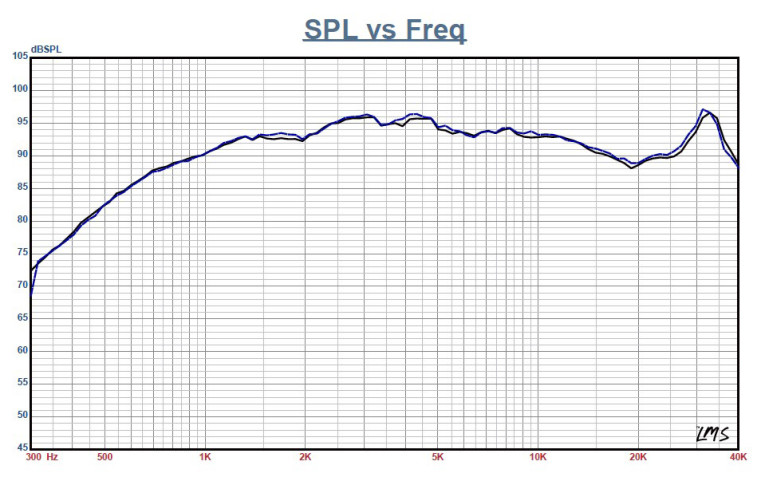



This article was originally published in Voice Coil, February 2013.





